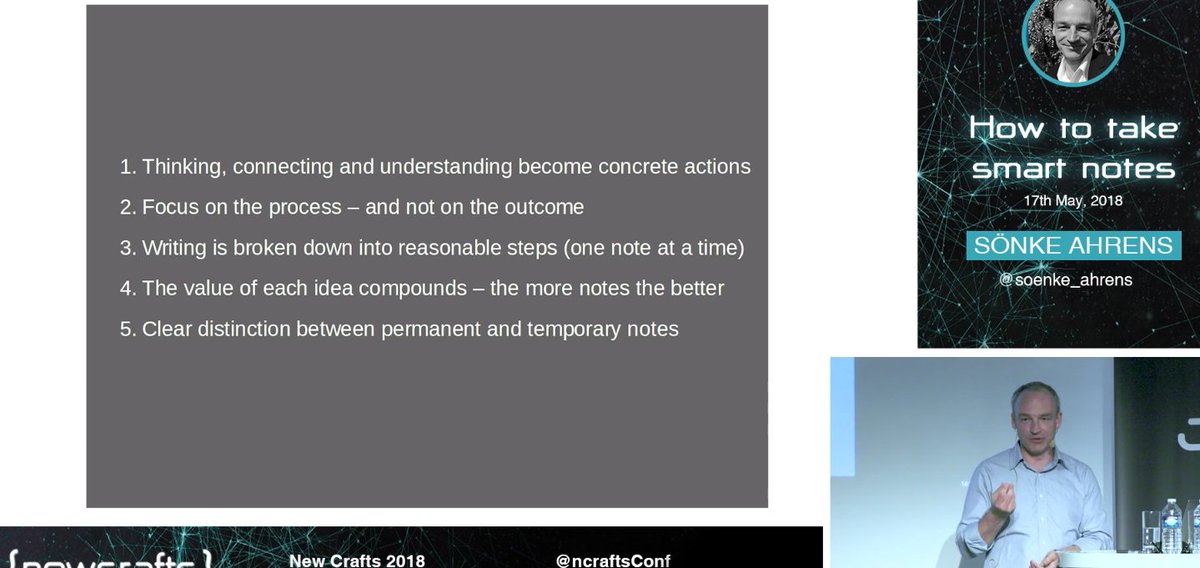
Coming to you Live from the Roam Hangouts with @cortexfutura Algorithm of Thought guru. Live tweeting his thoughts.
When @cortexfutura was asked about his background with note-taking software, he said “Been around the block” — no pun intended.
Demonstrating interfacing @zotero with Roam. I think this is a very popular concept for many researcher. He has designed a meta data export to make this happen. He will share his code. He has rolled his own solution to this problem.
He is using SmartBlocks to pull in quotes and creating links to Zotero. Another SmartBlock for AOT using a Work Cycle Review with Pomodoro. Simple way of guiding your work.
What is difference between an AOT & template?
+ Template is for repeating same structures, go in direction of algorithm, but not really since they don’t adapt
+ AOT - is a workflow, guiding thought. Has to adapt as you move through a process.
+ Template is for repeating same structures, go in direction of algorithm, but not really since they don’t adapt
+ AOT - is a workflow, guiding thought. Has to adapt as you move through a process.
@cortexfutura uses a 30 minute work cycle with a 10 minute break to refresh the mind. In one hour can get in 6 “cycles” of work. Of course using Pomodoro in Roam. Very cool along with DNP and keeping your flow and log together.
I worry some are misled by phrases (SecondBrain, Algorithm of thought & now add SmartBlock) & that they imply the “machine” thinks for us. Tools don’t think, they can help us think better through the process of using them. @RobertHaisfield mentioned tagging a a tool that helps.
@cortexfutura talked about importance of adapting AOT for yourself. Take a recommended process and start testing. Find what circumstances where they work, don’t, adapt. You will build your own based on experienced when you intentionally work to apply them.
He has seen @RoamResearch is helping with that trial & error process. What it was that started it, results, and history to come back too. “If we don’t write it down, we have no artifact that helps us analyze if something is working or not”.
Benefits of tools for AOT is they help you remember the process (Roam), guide you through all the steps (SmartBlocks). Reduces friction: just remember to use it, let the tool guide you through it. Tool is not thinking for you, but helping you do the thinking you need.
@GeorgeSilverman spoke about the importance of AOT helping us with managing emotions, making a variety of decisions. But he poses the problem for managing the hundreds of AOT we will develop over time.
@cortexfutura regarding his personal benefits/disadvantages:
+ more awareness of his own thinking process, reflective space, rather than reactive approach
+ disadvantages: constantly thinking about your thinking can be a trap leading you away from actually doing.
+ more awareness of his own thinking process, reflective space, rather than reactive approach
+ disadvantages: constantly thinking about your thinking can be a trap leading you away from actually doing.
Real life rewards? More confidence in the decisions he made, less second-guessing. Better directed in where to focus his energy.
@AbhayPrasanna Mr. Roam Encyclopedia demonstrating an AOT for dealing with judgment and frustration in our interactions with others. Learning to think through our emotions and having a log of such interactions to learn from the future.
@cortexfutura discusses that AOT helps us reduce friction in life. AOT allows you to transfer more energy to thinking about the thing you want to accomplish.
@RobertHaisfield asked does AOT stifle creativity? @thepericulum Good of AOT even with constraints breed creativity. They are not just a checklist, but provides options for thinking through an issue. @NormanChella says its quality questions & AOT designed for creativity.
@RobertHaisfield the contrarian’s contrarian refers to AOT a lens, how to look at a problem, but there is a risk of looking through too many lenses that overcomplicate and distract (possibly turning off creativity)
@cortexfutura doesn’t allow himself to take AOT to literally or rigidly. He knows he can break out of the algorithm when it stops working. This is difference between letting AI do the thinking for us, we know when the AOT has served its purpose, not about finishing a process.
@cortexfutura optimizing AOT - have versions of different length, so we can use them but adapt to circumstances. Also @tracyplaces reminds us in beginning to keep it simple, use one or two, develop the habit. (Kaizen)
• • •
Missing some Tweet in this thread? You can try to
force a refresh



